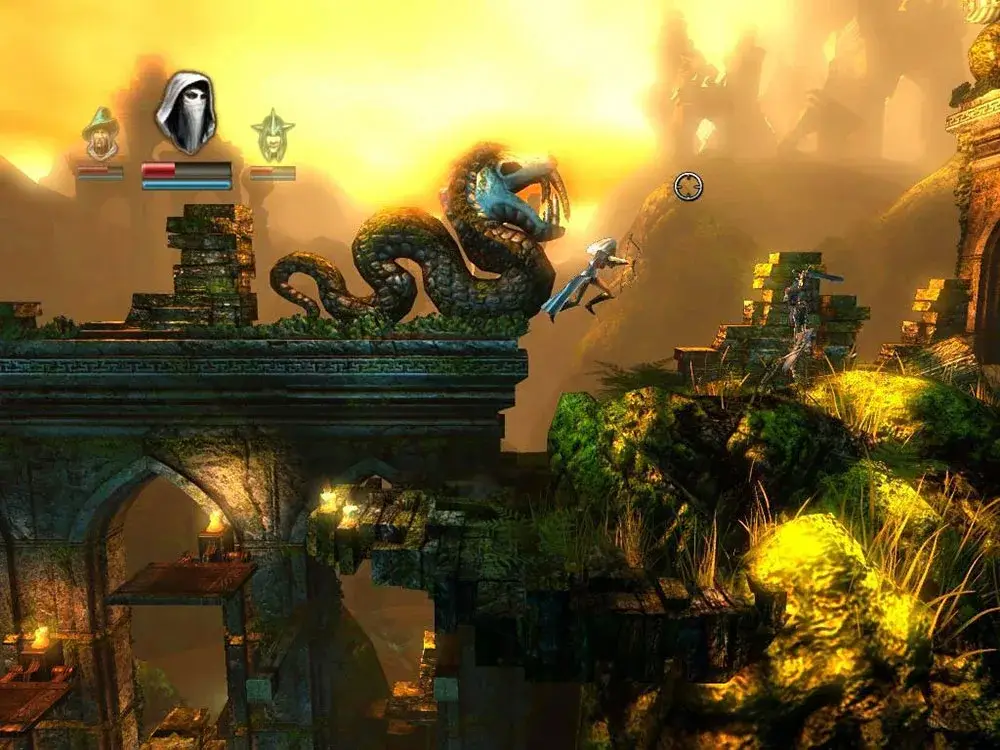Forget about video games as just a form of entertainment. They operate at a level where the nervous system reacts instantly, outpacing conscious analysis, turning gameplay into a symbiosis of millisecond decisions, adaptation of cognitive functions, and unconscious yet effective training. The question of how games affect the brain leads us deeper into its workings, showing that where many see only fatigue, there is actually recharging happening; where degradation is suspected, the brain receives an intense “crossfit” for memory and attention.
How Video Games Affect the Brain
Gameplay includes mnemonic techniques without conscious memorization. When memorizing rules, object locations, skill upgrades, or action sequences, working memory is activated. The player encodes information visually, audibly, and tactilely — thus training memory.

The effect is amplified in projects where the plot is non-linear, decisions affect the future, and inventory requires organization. The prefrontal cortex is engaged, strengthening the connections between neurons, and building long-term storage. The higher the repetition of an action, the faster the brain automates the algorithm.
Attention in the Trap of Events
The gaming scene often resembles a microscopic drama: characters move, the interface winks, the timer counts down seconds, and the plot rumbles in the background. All of this requires real-time engagement. The attention control system activates, keeping focus on the relevant object amidst distracting noise. The user instantly distinguishes background from target, recognizes threats among patterns, and manages multiple channels of perception. Such training improves skills in reality: in driving, negotiations, and studying.
Spatial Visualization
How video games affect the brain: navigation through multi-level maps, resource gathering, strategic base allocation — all of this activates spatial thinking. The hippocampus is engaged, enhancing 3D perception abilities and creating new neural connections. The player holds a mental map of the world, remembers routes, and predicts where the target is and where the last resource was. This enhances topographical memory, along with logical thinking, especially in architecture, logistics, and design. The brain acts like a GPS in expert mode.
Psychology and Its Digital Flexibility
The digital scenario does not overload the psyche if presented in moderation. With moderate gaming time, mood improves, anxiety decreases, and motivation for learning increases. Emotional engagement reduces the risk of getting stuck in repetitive thought patterns. Adaptability is formed — the ability for cognitive flexibility, where the brain quickly switches between tasks.
However, with excessive gaming time, the harm of video games to the brain begins to manifest: circadian rhythms are disrupted, concentration decreases, and gaming addiction arises. The key is balance. It is not the amount of time but its quality that determines benefit or harm.
Digital Therapy for Aging: How Video Games Affect the Brain
Games function as cognitive stimulation in adulthood. For older adults, gameplay slows neurodegenerative changes, especially in cases of dementia and Alzheimer’s disease. Continuous engagement and interaction with game elements activate latent areas of the cortex, contributing to the creation of new neural connections. Levels, puzzles, and plot forks serve as therapeutic stimuli that support memory, logic, attention, and motor skills. The game serves as an alternative to passive leisure, replacing passive information consumption with active transformation.
List of Genres That Train the Brain in Different Areas
Game genres create unique trajectories of neural stimulation. Each affects different areas of the organ, develops specific cognitive abilities, and activates specific zones. The question of how video games affect the brain becomes very specific when broken down into segments and corresponding functions.
Shooters: Explosive Reaction and Instant Decision
FPS (First-Person Shooter) games require lightning-fast situational assessment, aim control, movement, cover, and retreats. These tasks activate the sensorimotor cortex, enhance peripheral vision, and develop quick responses under overload conditions. The brain reacts in fractions of a second, constructs instant movement trajectories, and compares threats. Regular interaction with such projects improves hand-eye coordination and increases the accuracy of motor responses. How video games affect the brain in this genre: shooters strengthen reaction speed, stabilize peripheral perception, and develop neural pathways related to visual-motor control.
Platformers: Precision, Correction, and Learning from Mistakes
Jumping, timing, traps, and complex levels require fine motor skills and precise calculations from the player. Constant repetition of movements activates the cerebellum, strengthening areas responsible for sensorimotor adaptation. The brain records mistakes, corrects trajectories, and memorizes patterns. This fosters resilience to frustration and develops long-term memory, especially visual memory.
RPG: Complex Choices, Empathy, and Analysis
Role-playing games rely on plot, dialogue, decision-making, interaction with NPCs, and character development. They activate brain areas associated with consequence evaluation, empathy, and logic. The player analyzes situations, chooses actions, and forms a moral stance. This strengthens the prefrontal cortex and areas related to long-term planning and associative memory. How video games affect the brain through RPGs: emotional intelligence is formed, the ability for strategic thinking is enhanced, and the decision-making mechanism based on scenario analysis is developed.
Strategies: Architecture of Logic and Multitasking
RTS and TBS genres require instant processing of large volumes of information: economy, resources, troops, positions. The player manages multiple tasks simultaneously, plans steps ahead, and predicts the opponent’s actions. Such mechanics activate the frontal lobes, strengthening connections between areas responsible for analysis, forecasting, and data structuring.
Simulators: Precision, Attention to Detail, and Systemic Perception
Farming, driving, medicine, business — simulators model reality with high detail. The player manages parameters, tracks indicators, and adapts to changing conditions. The brain activates neural chains responsible for systemic thinking, realism, and logical reasoning. The higher the difficulty, the deeper the engagement.
VR Games: Full Sensory Capture
Virtual reality activates the vestibular apparatus, visual and motor sensory systems. The player moves in space, interacts with objects, and orients in 360°. The brain operates in full-body simulation mode. All channels are engaged: vision, hearing, balance, and motor activity. This enhances spatial thinking, trains orientation, and adapts to new conditions. How video games affect the brain in a VR environment: they enhance spatial coordination, stimulate sensory integration, and develop orientation skills in unfamiliar conditions.
Reaction: Learning Speed Through Challenge
Games initiate challenges that the brain responds to not just with instinct but with precise calculation. Reaction is formed not only in motor skills but also in cognitive accuracy. The user reacts faster, assesses consequences, and chooses the right path. Gaming activity improves visual-motor coordination and predictive thinking. This is important in professional environments such as medicine, aviation, and engineering. Reaction is not just about pressing quickly but doing it correctly. The game creates conditions where mistakes cost results, and thus the brain restructures algorithms to perfection.

Generations and Neuroplasticity
For children — development, for adults — unloading, for the elderly — prevention. How video games affect the brain — they expand age boundaries and create new learning scenarios. Neurobiology confirms: regular interaction with interactive tasks enhances activity even in adulthood. The gaming process is hidden learning, not through rote memorization but through challenge. The brain engages when it receives feedback, finds pleasure in solving problems, follows algorithms, and wins.
Conclusions
Understanding how video games affect the brain changes the attitude towards screen time. It is not a loss of productivity but an alternative to standard forms of development. The game engages attention, enhances memory, forms adaptive thinking, and recovers from overload. The gaming environment requires balance, just like any training.
 en
en  ru
ru  de
de  ar
ar  es
es  nl
nl  hi
hi  fr
fr  it
it  pt
pt  el
el 



